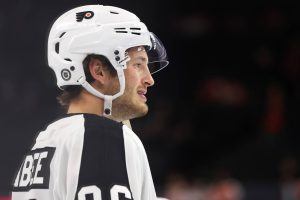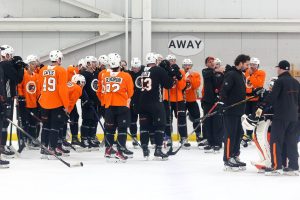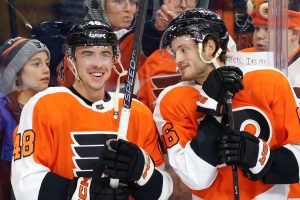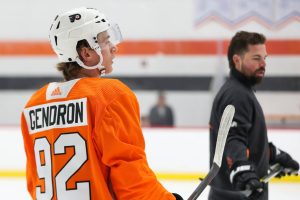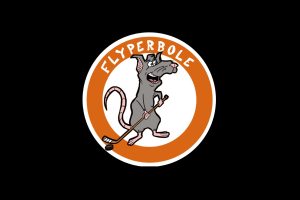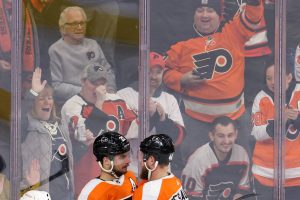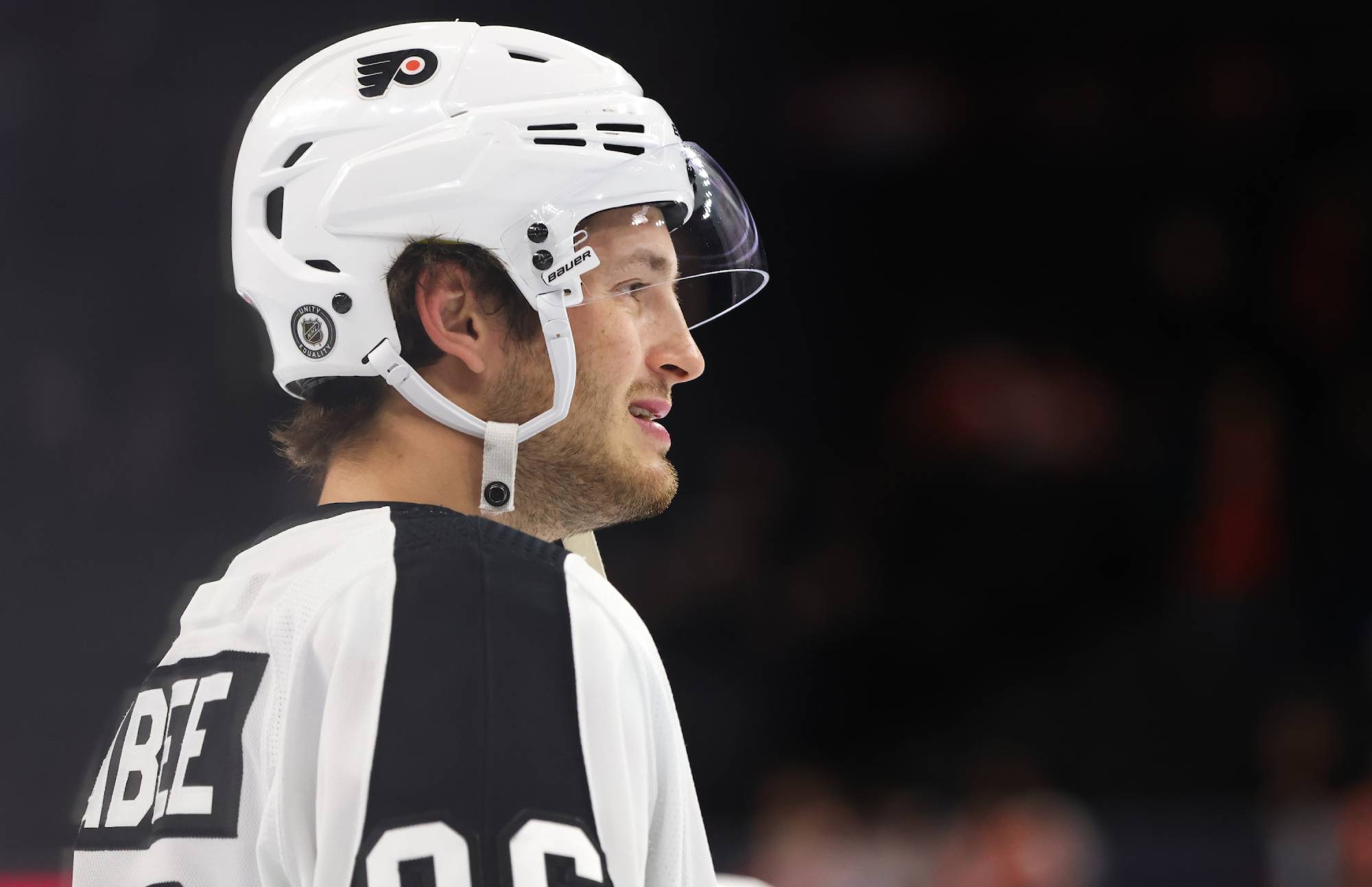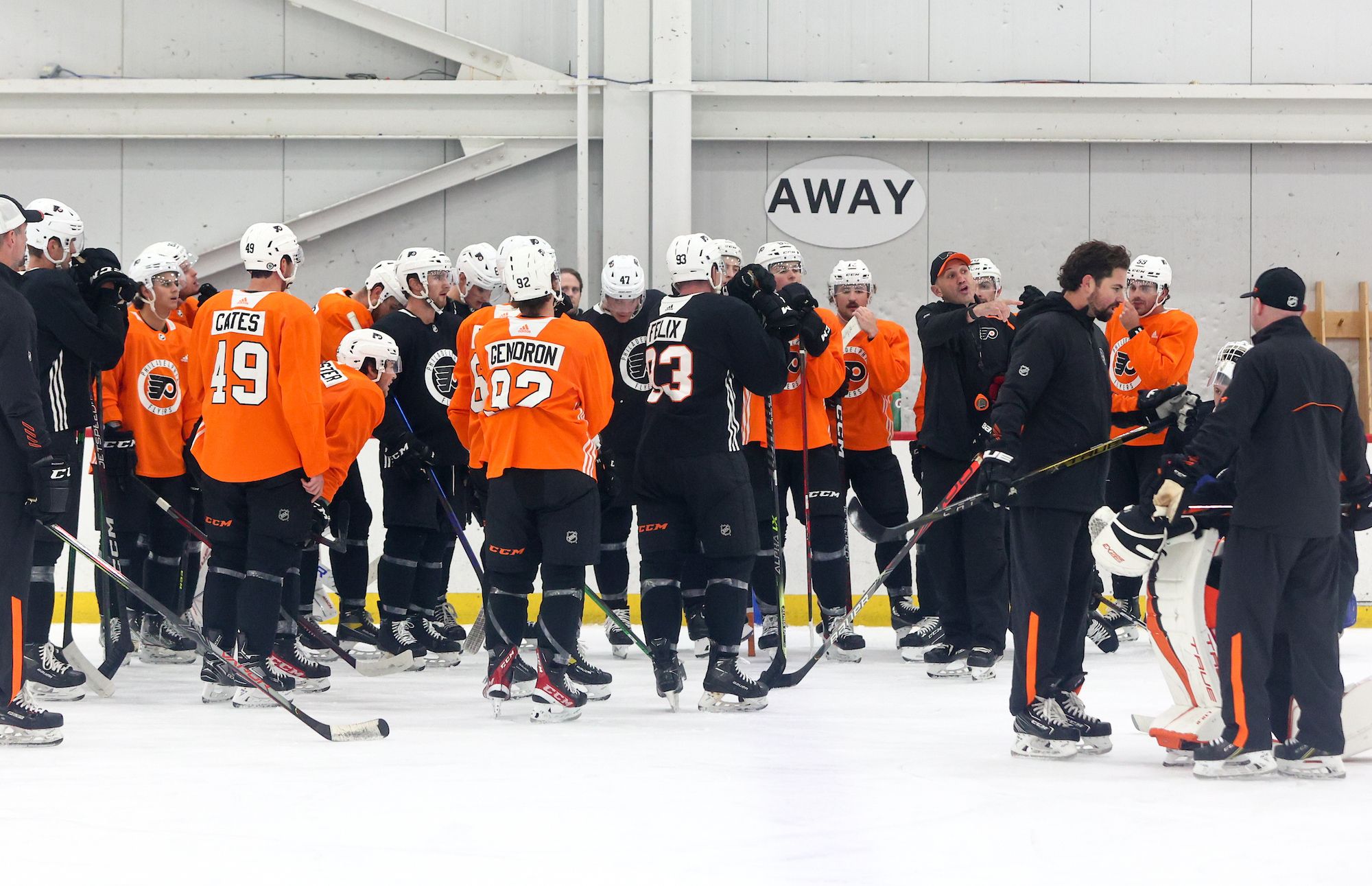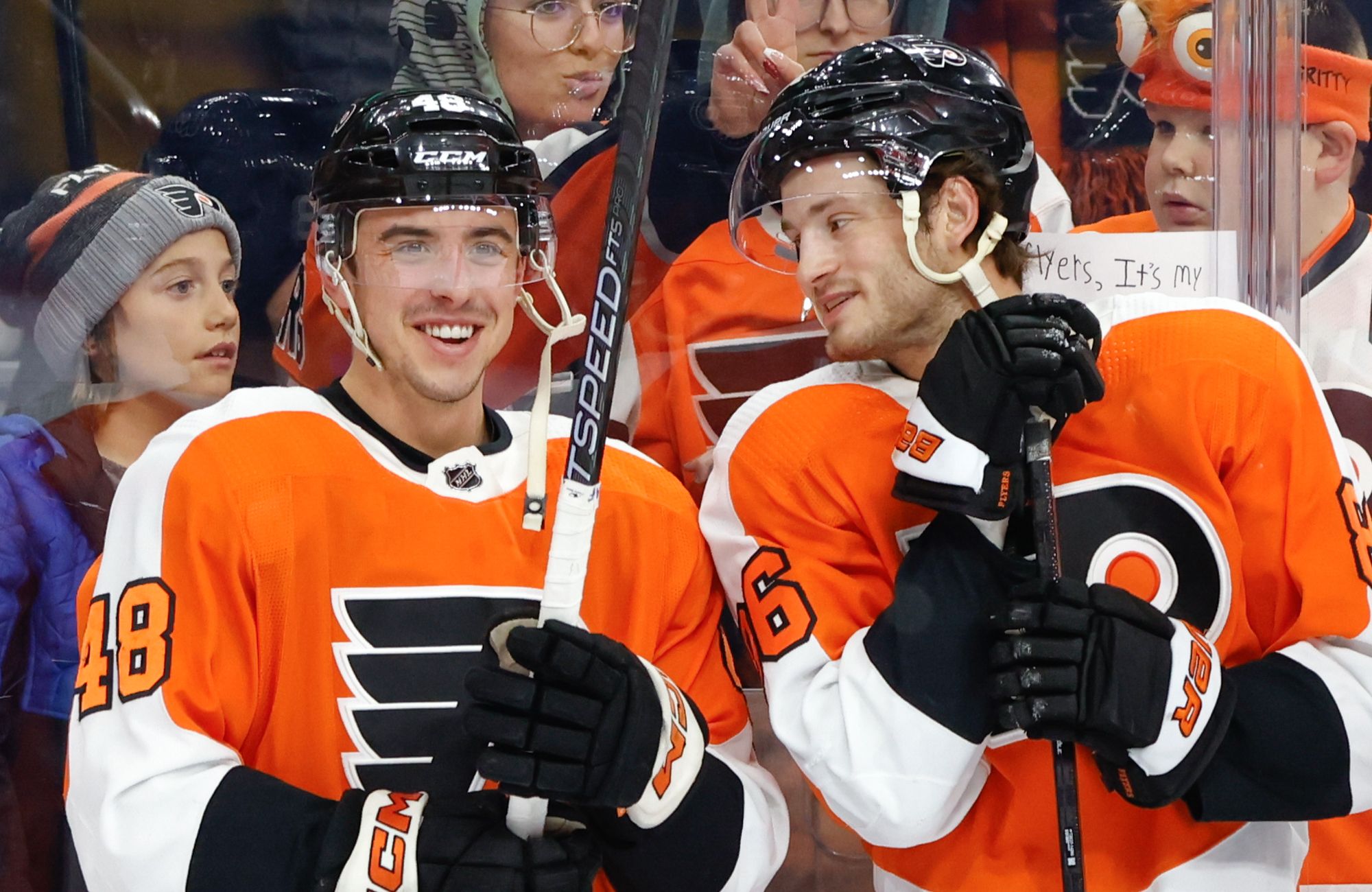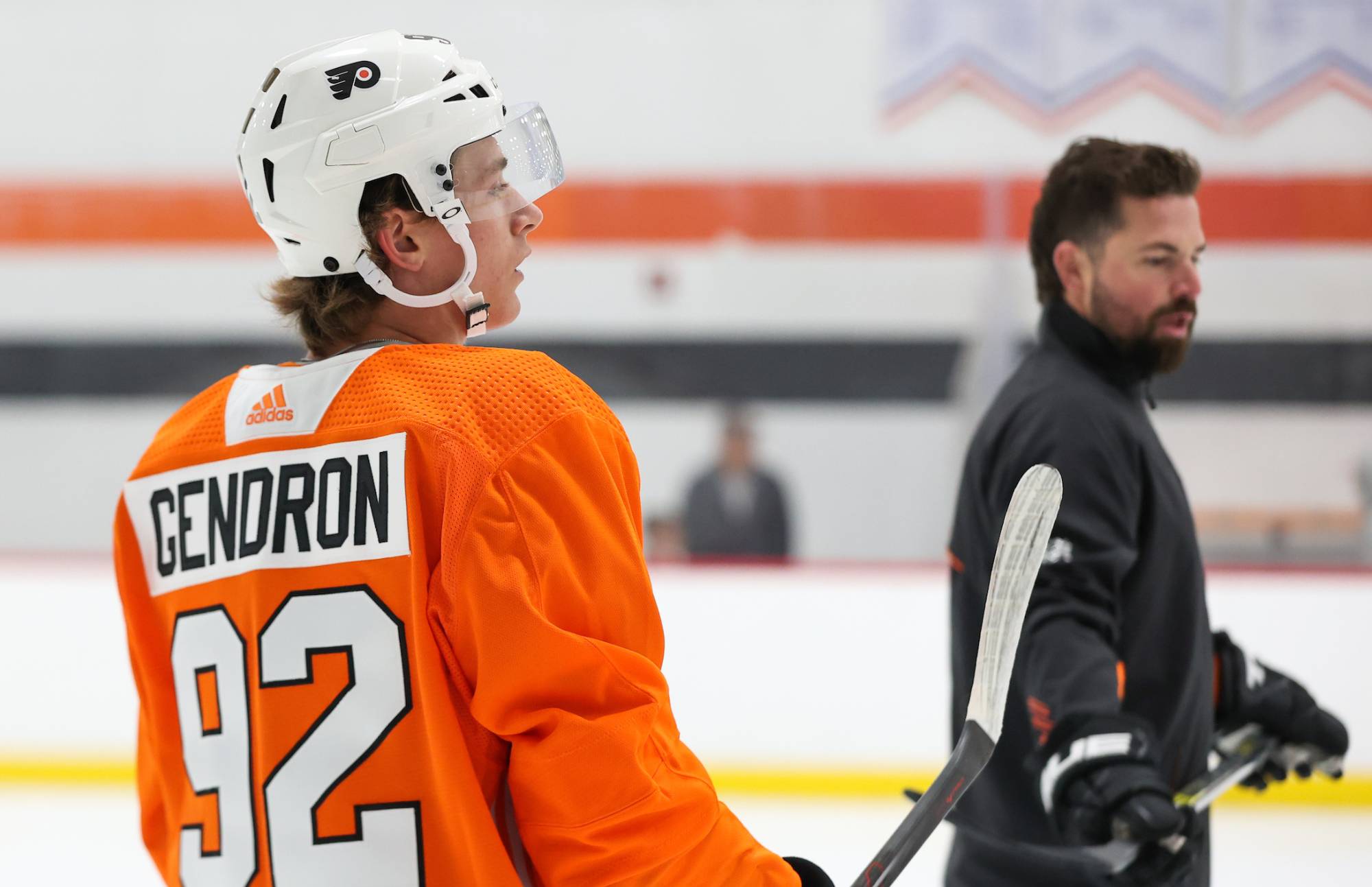James Mirtle of the Globe and Mail has done some great work breaking down the league’s financial position and the current offers from each side. Along the way, he started thinking about what the league would look like if they just eliminated a bunch of franchises, reducing the league down to just the healthiest markets and the top talent. He decided to try to figure that out.
He recruited bloggers and Globe and Mail staff to draft teams for a 12-team league, with six teams in the American division and six teams in the Canadian division. I got the opportunity to draft the Philadelphia franchise. Since we don’t have an actual Philadelphia team to care about right now, I thought I’d do a little write-up on what our new pretend team looks like.
The first thing I did was recruit Derek Zona to be my co-manager, partly because I find drafts dull if there’s nobody to talk to about the decisions and partly because I feared being autodrafted if I couldn’t make it for the whole thing. David Shoalts showed why this was a wise decision, as he was unable to log in and the autodrafter picked a ridiculous team for him; his Ottawa franchise selected nine wingers, two centers, and two goalies before taking the first defenseman in round 14. Jonathan Quick is a good goalie, but he can’t be thrilled that the top pairing in front of him is now Mark Streit and Jack Johnson.
Contract status doesn’t matter for this league — our rich franchises don’t have a salary cap and can always afford to resign their players. The goal is just to build a team whose players would win as many championships as possible.
In our pre-draft strategizing, Derek and I decided that our primary consideration would be having a group of players all peak at the same time; in a smaller league with fewer playoff series, the playoffs will more often crown the best team and just being a decent team for a long stretch isn’t as effective a strategy.
We suspected going in that this would mean focusing on younger talent, since people tend to have their evaluations of value colored too heavily by a player’s current performance — Zdeno Chara is a great player, but he turns 36 this year; are the last couple years of his career really worth more than the next 15 years of PK Subban’s? When we landed the #2 overall pick and the best player available was 21-year-old Steven Stamkos, our decision was sealed: the focus was on a team that would be at its best over the span from about 2014 to 2018.
Next, we had to prioritize positions. We decided goalies should come last, since the goalie pool is getting deeper and stronger as each generation of new goalies is better than their predecessors. In a 12-team league we’d be better off getting the 14th-best goalie in round 16 than getting a upper-tier goalie in the first few rounds. Would you rather have Stamkos and Kari Lehtonen (career even strength save percentage of .926) or Pekka Rinne (.928) and Jake Gardiner? Oliver Ekman-Larssson and Lehtonen or Carey Price (.924) and Michael Cammalleri? This worked out more or less exactly as we hoped.
Since we were targeting youth, it made sense to focus on forwards over defensemen — younger defensemen are sometimes a bit underappreciated and might be obtainable in later rounds, whereas we couldn’t count on a 21-year-old first-line center flying under the radar.
We also made center a higher priority than wing, since they influence the play more, which meant centers were the top priority and the first position we completely filled. We landed Stamkos in round 1, Patrice Bergeron in round 3, Sean Couturier in round 11, and Adam Henrique in round 12, giving us three centers who are 21 or under and an elite two-way driver of play.
We ended up focusing a bit more on defense than wing, but this was more the result of who was available than a specific strategy on our part — we kept seeing defensemen we were excited about and wingers who we weren’t. We drafted Ekman-Larsson in round 4, Cam Fowler in round 6, Ryan McDonagh in round 7, and John Carlson in round 9. That gives us a top four who are all 23 or younger and have already shown the ability to take on top competition and push play forwards. In round 15 we added Justin Faulk, who played 23 minutes a game at the age of 19, and in round 19 we landed elder statesman Joni Pitkanen.
Wings got slightly less attention, but certainly weren’t completely ignored. We picked Tyler Seguin in round 2, Evander Kane in round 5, Jakub Voracek in round 8, and Andrew Ladd in round 10. Later in the draft, our bottom six wingers were rounded out with TJ Oshie, Kyle Okposo, Bryan Little, and Nathan Horton.
In the latter part of the draft, we scooped up some even younger talent to fill out the roster. We ended up with a squad that will definitely have some growing pains, but we’re excited to pretend to see them play together for a decade or more and are looking forward to several pretend cups.
Here are your Philadelphia Quakers:
Forwards
Evander Kane – Patrice Bergeron – Tyler Seguin
Andrew Ladd – Steven Stamkos – Jakub Voracek
Nathan Horton – Sean Couturier – T.J. Oshie
Kyle Okposo – Adam Henrique – Bryan Little
Mika Zibanejad
Defense
Oliver Ekman-Larsson – Ryan McDonagh
Cam Fowler – John Carlson
Justin Faulk – Joni Pitkanen
Carl Gunnarson, Dougie Hamilton
Goalies
Kari Lehtonen
Ilya Bryzgalov
The worst news of the draft is that Claude Giroux is now a New York Ranger. Here’s how our rivals to the north stack up, as drafted by Neil Greenberg of the Washington Post and ESPN:
Forward:
Giroux-Stastny-Lupul
Stalberg-Couture-Stafford
Krejci-Staal-Grabner
Purcell-Stepan-Setoguchi
Defense:
Karlsson-Suter
Edler-Alzner
White-Vlasic
Orlov, Liles, Gleason
Goalie:
Howard
Varlamov
The other team that may emerge as a rival is Toronto. They targeted an even younger group of prospects than ours in this draft, picking up Nugent-Hopkins, Landeskog, Huberdeau, Kreider, Galchenyuk, Larsson, Granlund, Kulikov, Cowen, and Coyle. We may end up facing them in multiple pretend Cup finals in a few years.
And finally, here’s where members of the Flyers were drafted:
Giroux (round 1, pick 4), Scott Hartnell (round 5, Shoalts autopick), Voracek (round 8), Wayne Simmonds (round 9), Chris Pronger (round 10), Couturier (round 11), Danny Briere (round 11, Shoalts autopick), Braydon Coburn (round 12), Max Talbot (round 15, not an autopick), Kimmo Timonen (round 17), Matt Read (round 19), Bryzgalov (round 20). Brayden Schenn is the most notable snub.
You can see the full draft results here.
